Be honest with yourself, how many times do you really check your garment labels to see what it is made of?
Fibers are the main part of our clothes. Literally every garment won’t exist without them, that’s why we must check the fiber before buying, and make it a habit. They determine how sustainable your clothes are.
Let’s put it like this, both natural and synthetic fibers have a process, they just don’t simply exist to become thread or fabrics magically. They are transformed into thread after an extraction of the material. Of course, don’t forget they needed people to become what we see as fabrics. If these people were exposed to chemicals or if our planet was damaged, we can’t just keep buying without awareness.
I’m pretty sure that if you’re here you want to get informed and make a change, and I applaud that because those small changes make a huge difference, believe it or not.
It’s hard and confusing, we get it. That’s why we put together a Fiber dictionary of sustainable fibers, so you can get an idea of how green and ethical your garment is, by simply looking at the label to know what fiber it is made of.
First of all, you must know what fibers are killing us and our planet. We’ll be using these 3 colors to guide us:
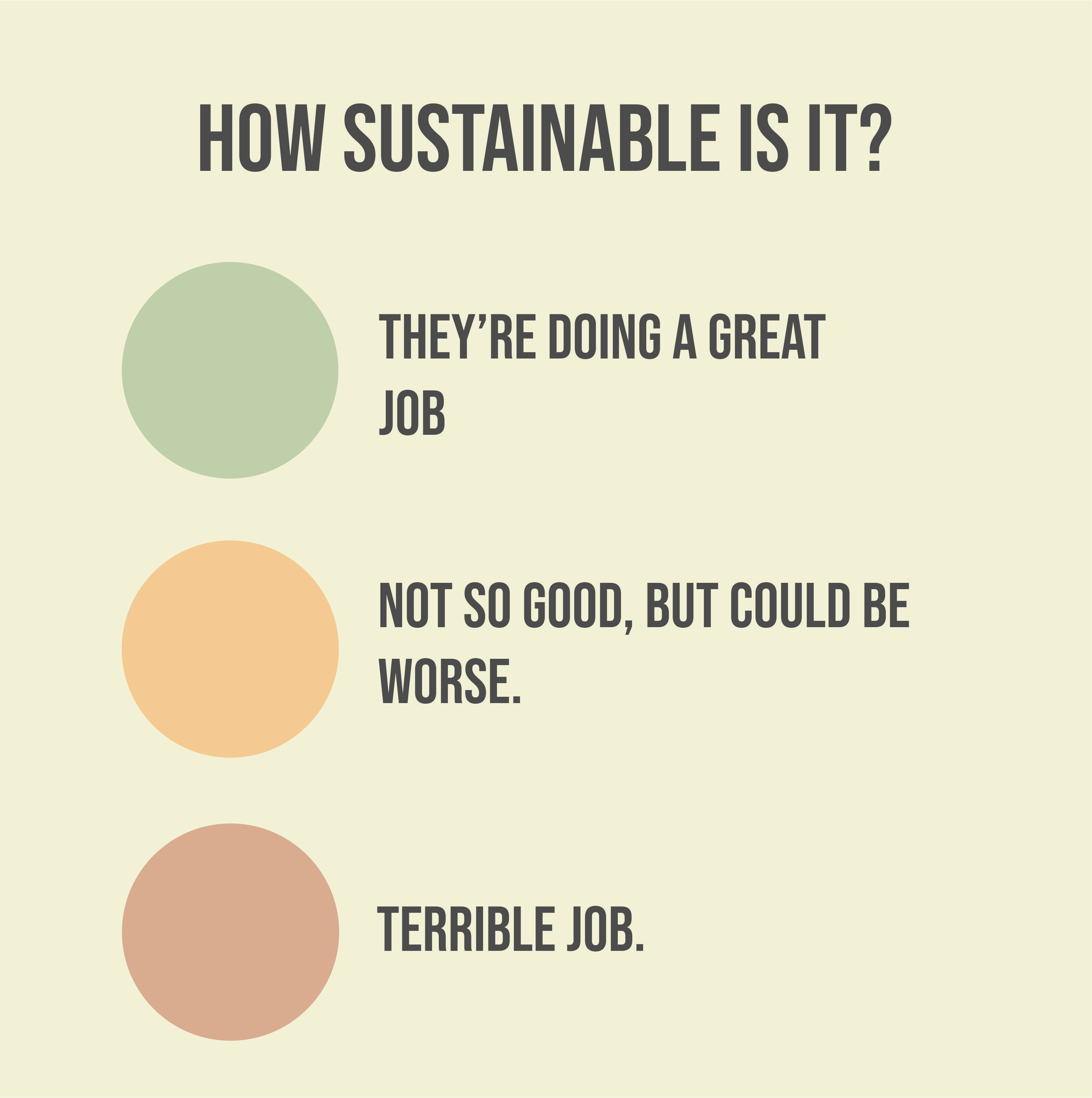
What fibers should I avoid?
1. Regular Cotton
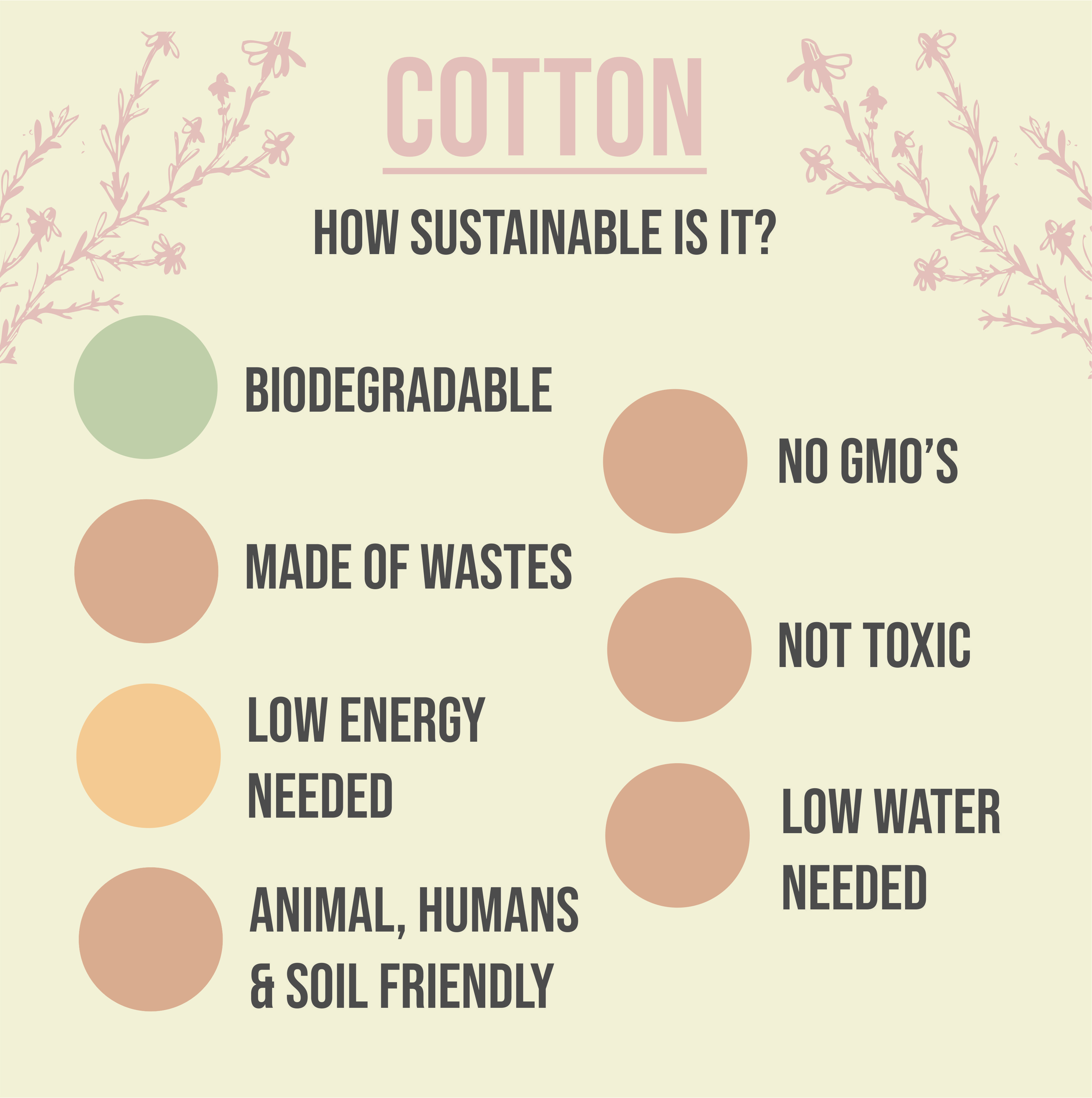
Cotton is one, if not, the most popular fiber out there. It’s fresh and soft, making it also one of the most versatile fibers.
Sadly, to obtain cotton, they use an enormous amount of pesticides. This affects, not only the farmers, but it damages the soil in a tremendous way, creating soil erosion, and sometimes as consequence, you can’t grow anything else ever again.
Where is it used? We find it on dresses, sweaters, jeans, t-shirts, sheets, towels, etc. In an infinity of products.
How to avoid it? Buy recycled cotton or organic cotton instead.
2. Polyester
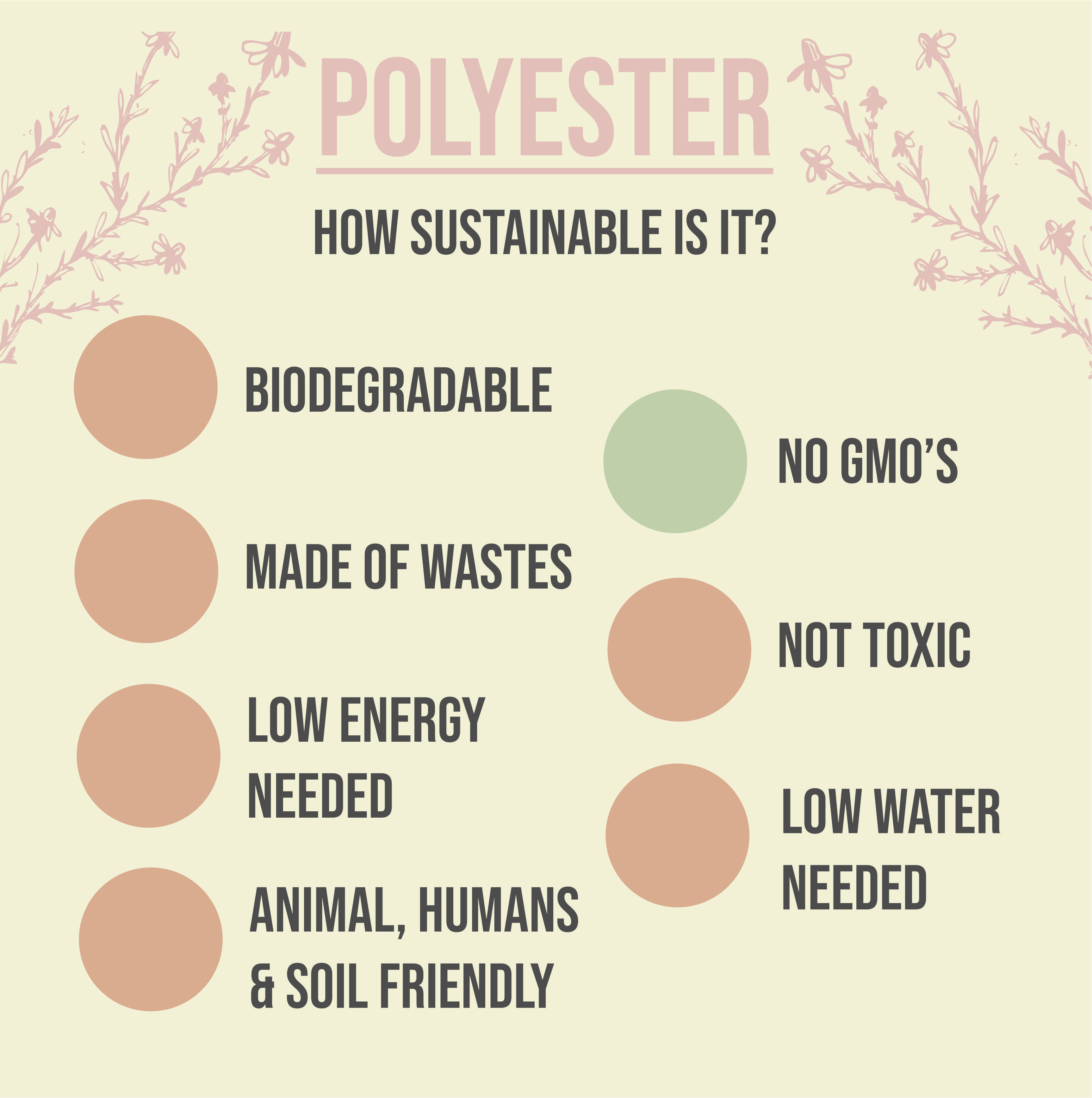
The second most common fiber, one of the cheapest and probably the worst of all fibers.
I could give you a huge explanation of how polyester is a terrible alternative, but I’m just going to say this: polyester is plastic. It’s not biodegradable, it’s toxic for your skin and it even feels terrible most of the time.
Don’t be fooled by the price. Trust me, you can find something better for just a couple dollars more.
Where is it used? Shirts, dresses, blouses, sportswear, etc.
How to avoid it? Recycled polyester is a better alternative.
3. Nylon
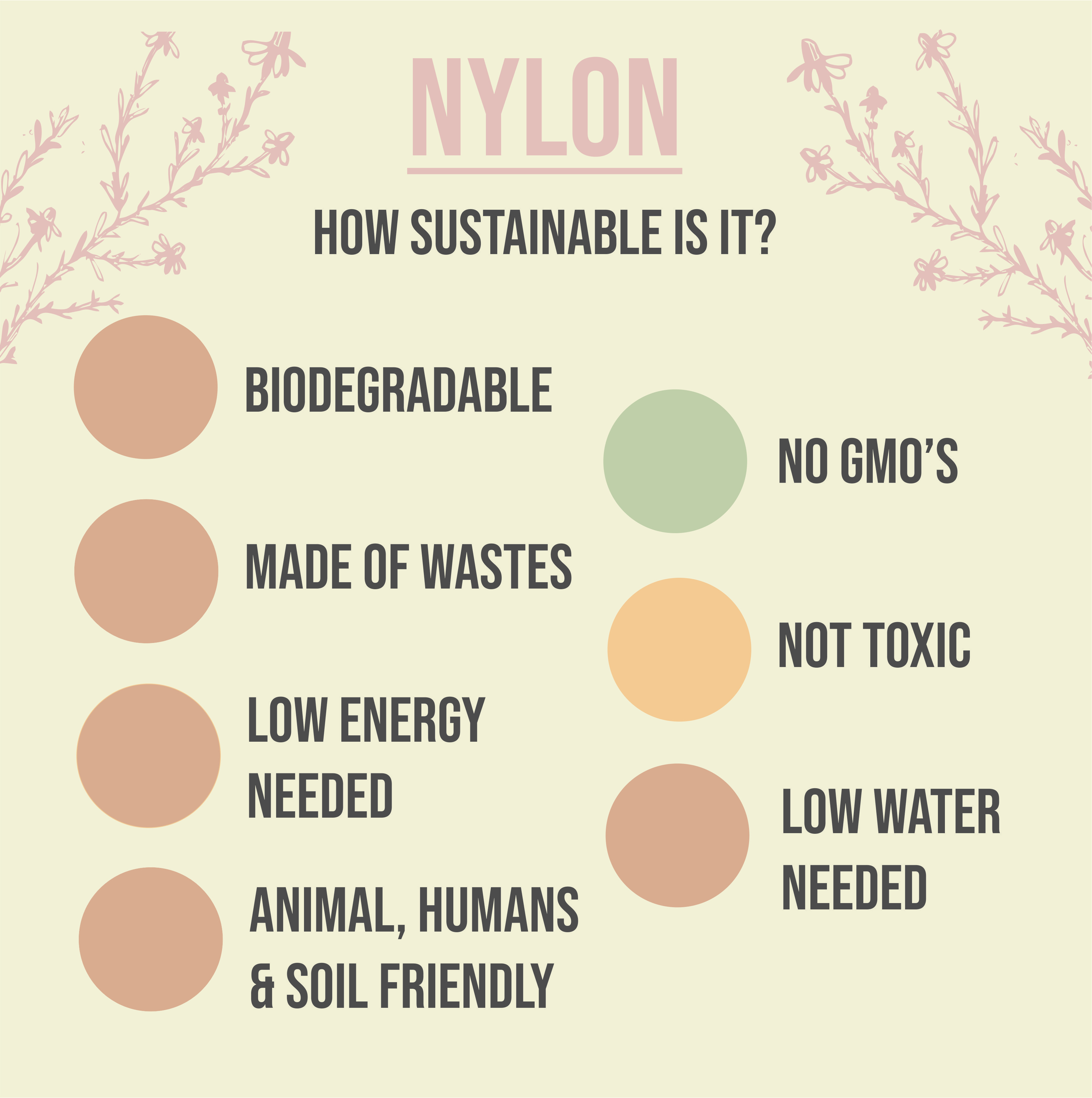
Another fiber made of plastic. Just like any plastic fiber, it is not biodegradable, which means that buying it will only generate more waste in the end. If you can, try to avoid its consumption.
Where is it used? Jackets, swimwear, and sportswear.
How to avoid it? Recycled Nylon.
4. Angora
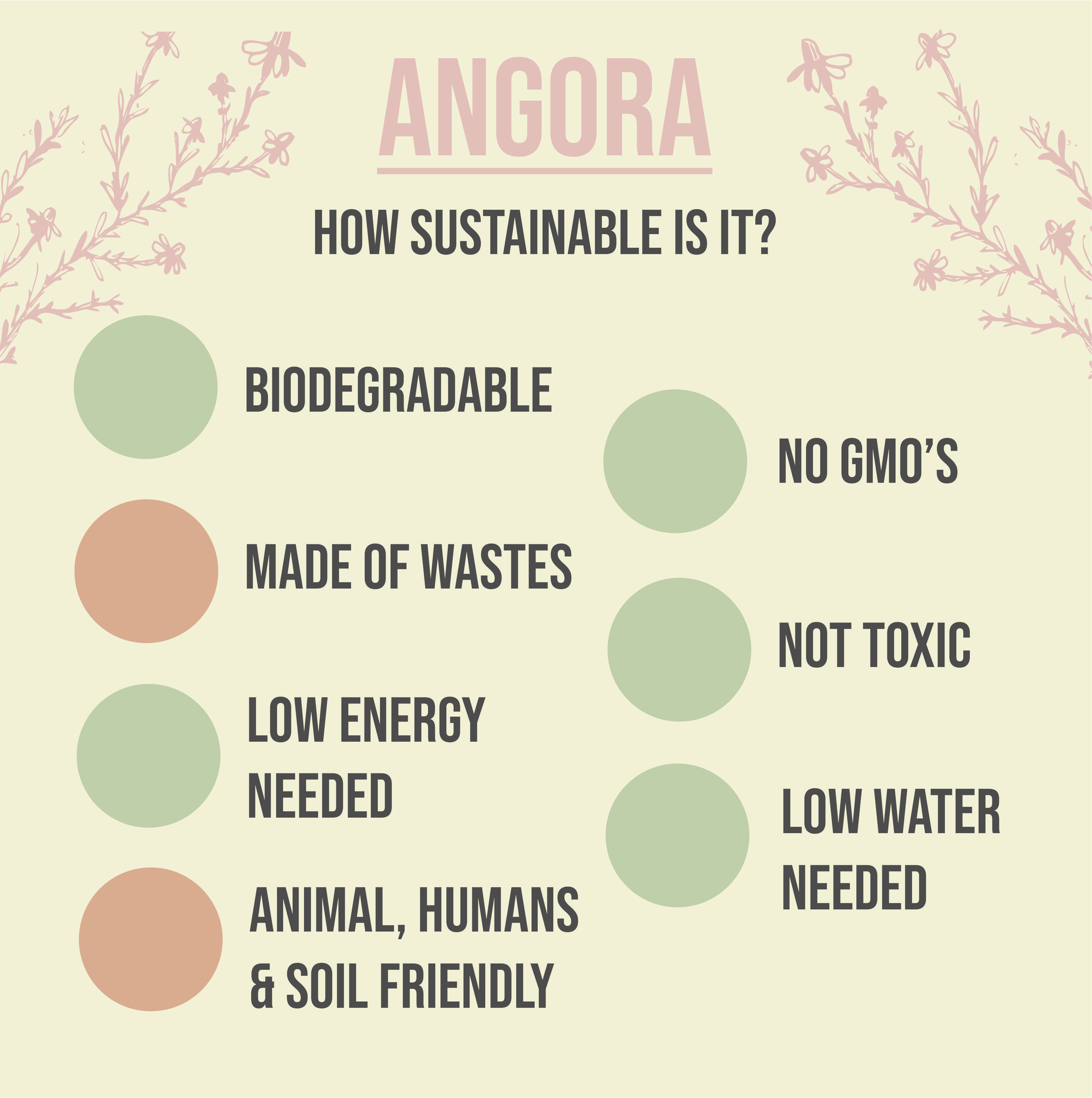
Angora is a soft, beautiful, warm fiber which sadly comes from the hair of angora rabbits. It’s one of the animal fibers that its process of obtention is cruel and mercilessly. So, if you’re not into cruelty and animal exploitation, you should definitely avoid this one.
While there are cruelty-free angora fiber options, I haven’t seen certified providers yet.
Where is it used? Beanies, sweaters, scarves, gloves, winter wear.
How to avoid it? It is usually blended with other fibers, so you can just look at the labels and if you see a % of angora, just avoid purchasing that product.
5. Rayon
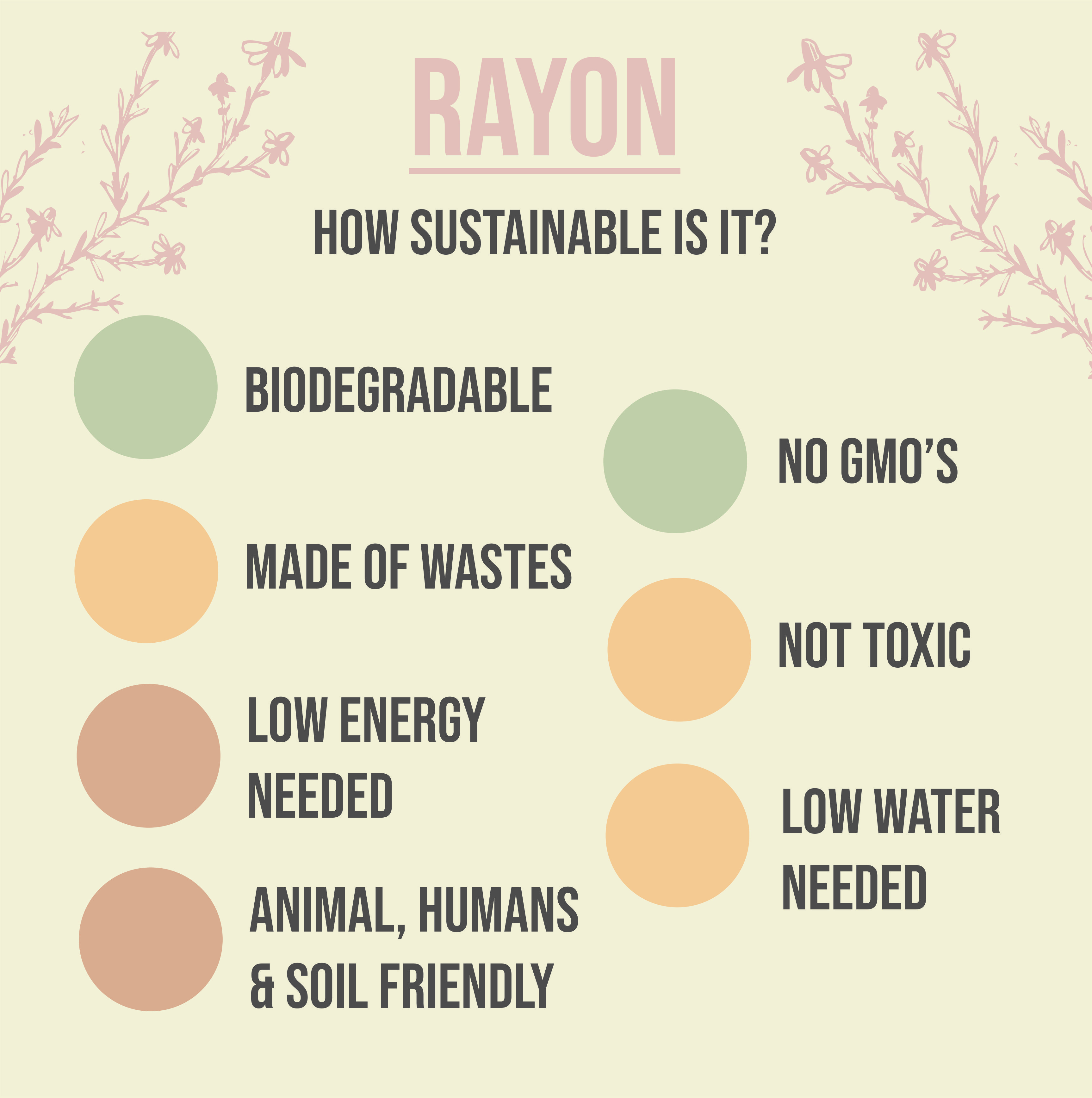
Rayon is a fiber obtained from wood and other natural sources from agriculture. It has a silky texture and a lot of people love it.
Even though it comes from natural sources, to be transformed into the fiber, they use a huge amount of toxic chemicals. This is what makes it not sustainable to consume.
Where is it used? Blouses, t-shirts, and dresses, mostly.
How to avoid it? Look for Tencel products. Tencel is a sustainable substitute for rayon.
6. Faux fur
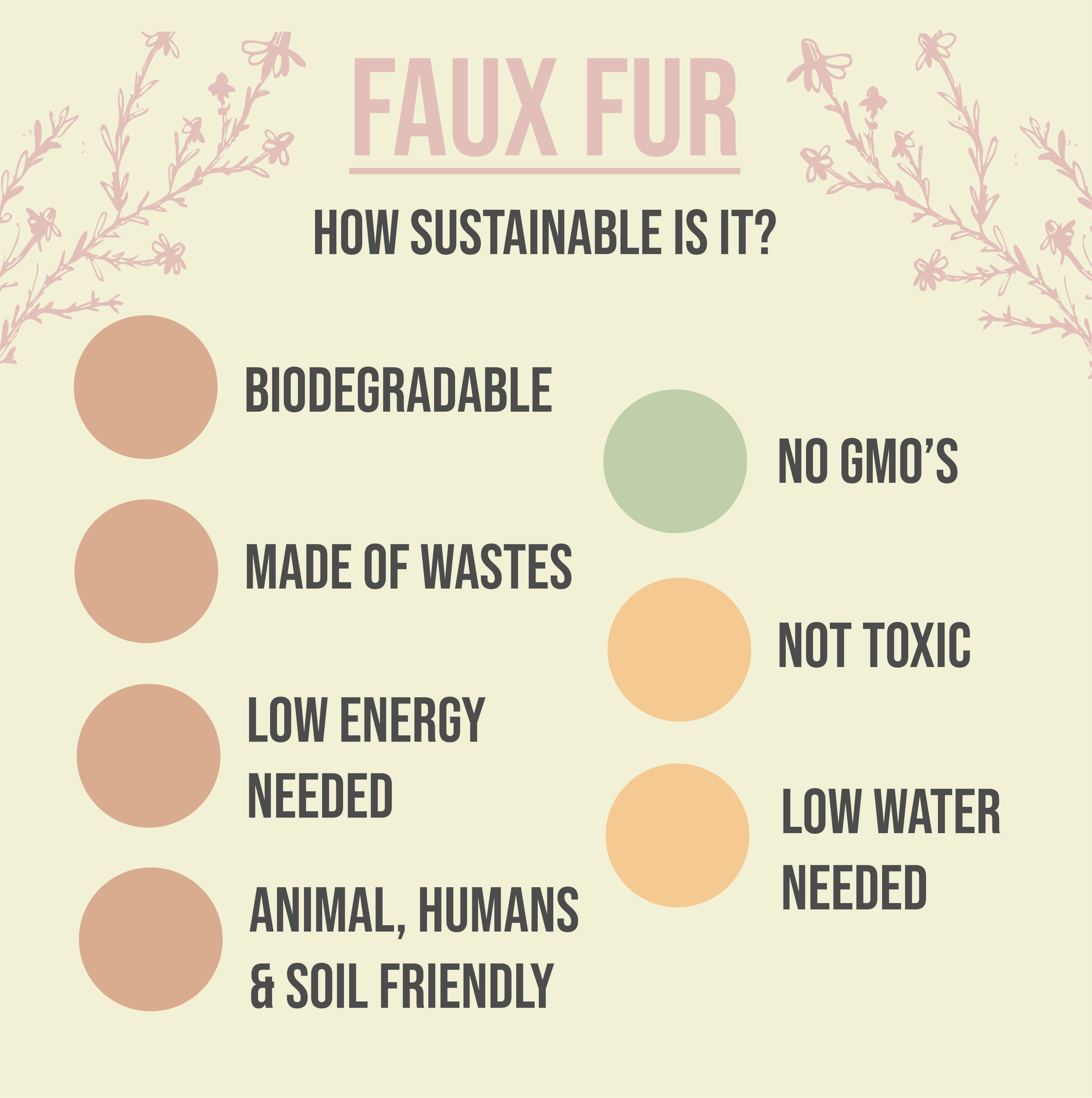
Faux fur is made out of plastic. I don’t think I need to keep telling you all the disadvantages of buying plastic. I know it can look glamorous and stunning, but if you can, it’s better if you avoid it.
Where is it used? Coats, vests, pillows, etc.
How to avoid it? We know fur isn’t sustainable or cruelty-free, and while we know it can look pretty, the truth is that it’s better to avoid its consumption.
7. Acrylic
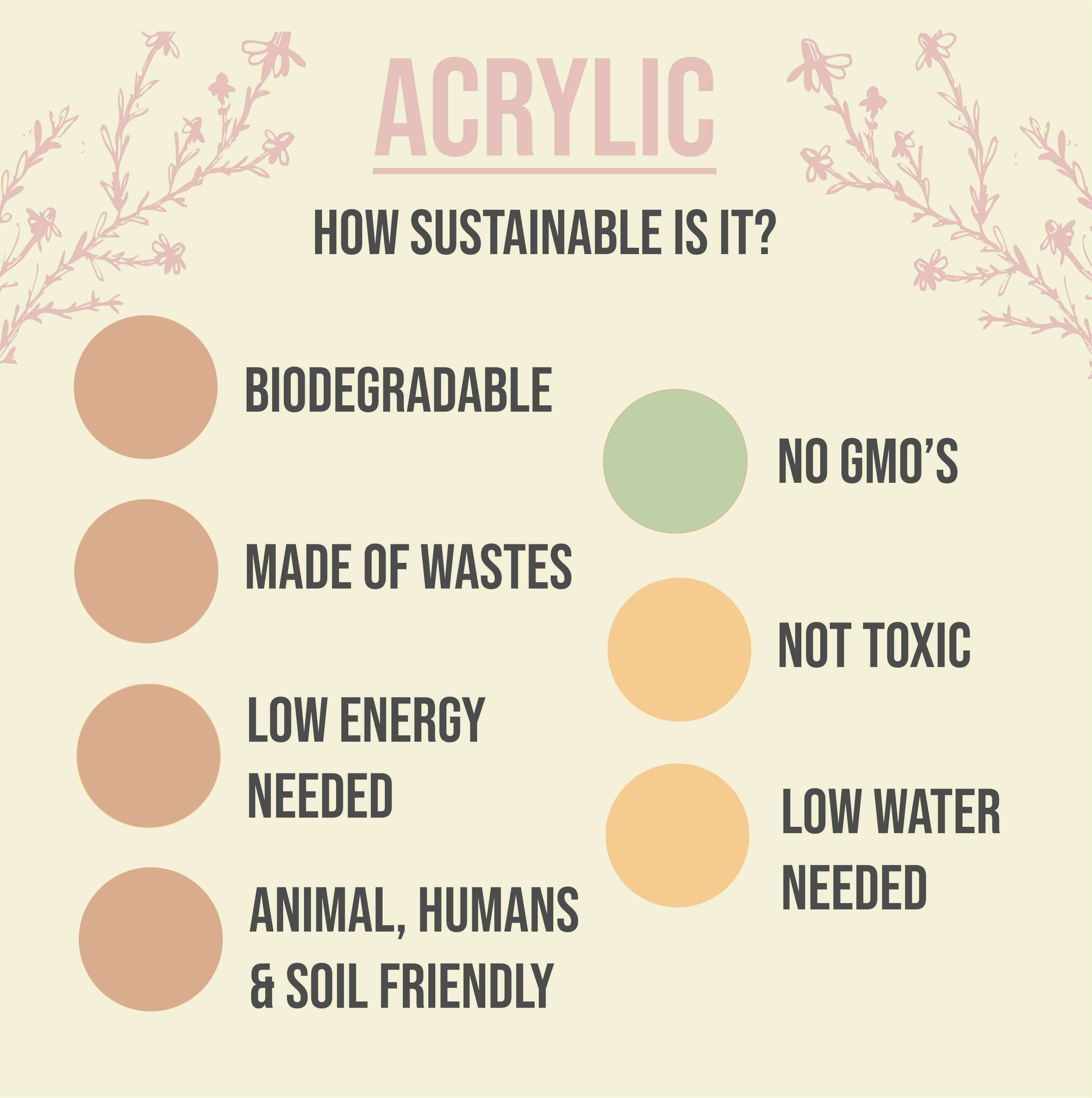
Another plastic fiber. It’s also a very cheap material and a substitute for wool.
Where is it used? Sweaters, pants, scarves, gloves, winter clothing in general.
How to avoid it? Buy organic or recycled cotton clothing, or responsible wool & cashmere.
You’re probably thinking: “This is too hard!! Those are basically all the fibers used in fashion!”. Well, yeah, I’m not going to lie to you. All these fibers are very common in the fast fashion industry.
Don’t worry, the sustainable fibers are getting more common, and even on fast fashion brands, we’re starting to see them every now and then.
If you pay attention, you’ll see there are a lot of new fibers, you just need to be more careful and read your labels! You’ll discover a new world of them.
Now, let’s start with the good stuff:
The Natural Fibers
PLANT-BASED:
Organic Bamboo
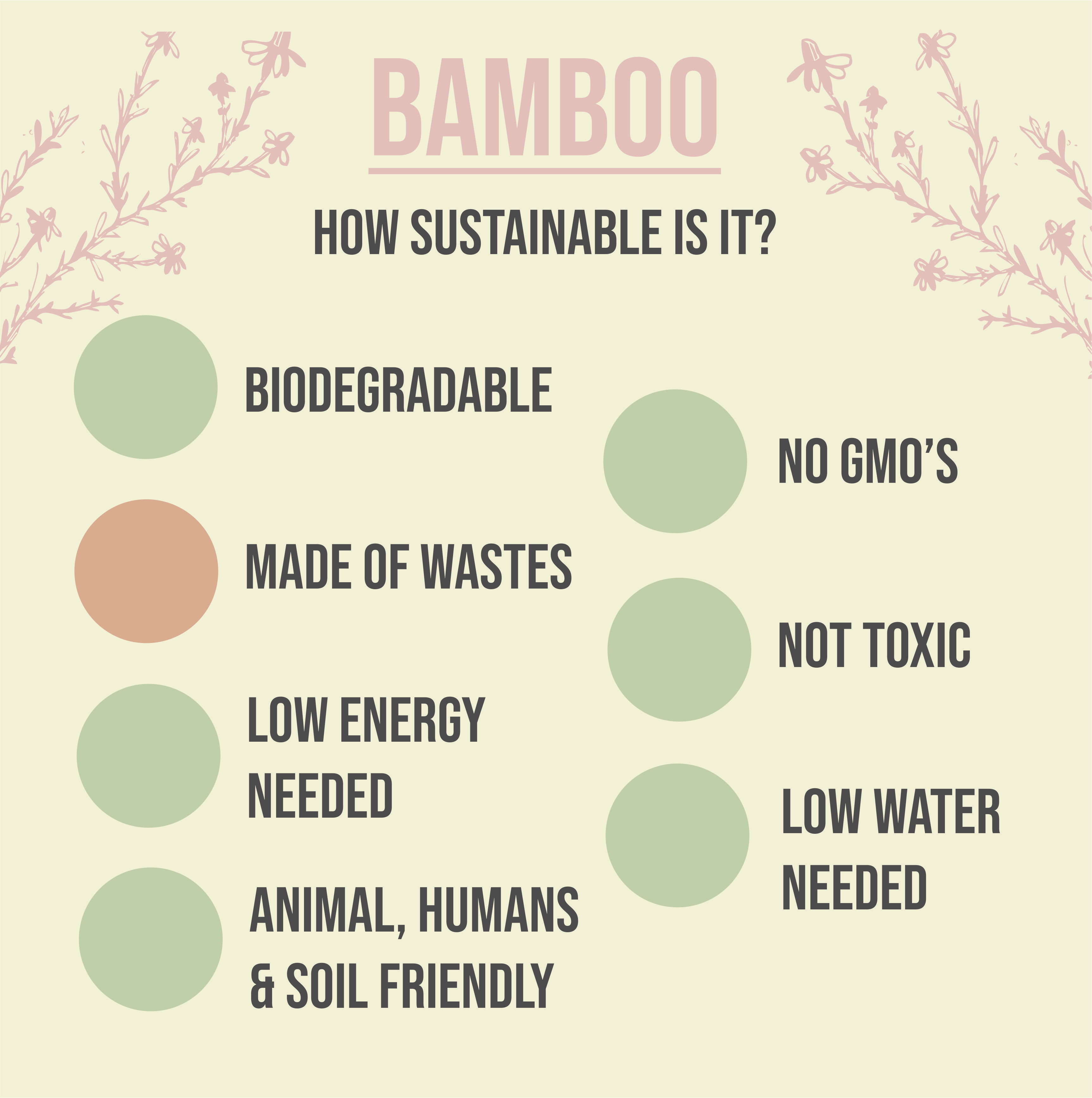
A better substitute for Cotton, rayon, and polyester.
Used in: Shirts, t-shirts, blouses, bedsheets, etc.
It’s a breathable, hypoallergenic, antibacterial, and sustainable fiber. Good for the environment, fast to grow and it even helps the soil by giving it nutrients.
The process of transforming the fiber into thread has been modified through the years, to the point it is a lot more sustainable today. However, there are places where the process from fiber to thread can be very full of chemicals. Because of this, we recommend you to always pay attention to your fibers, make sure it is sustainable bamboo.
Organic Cotton
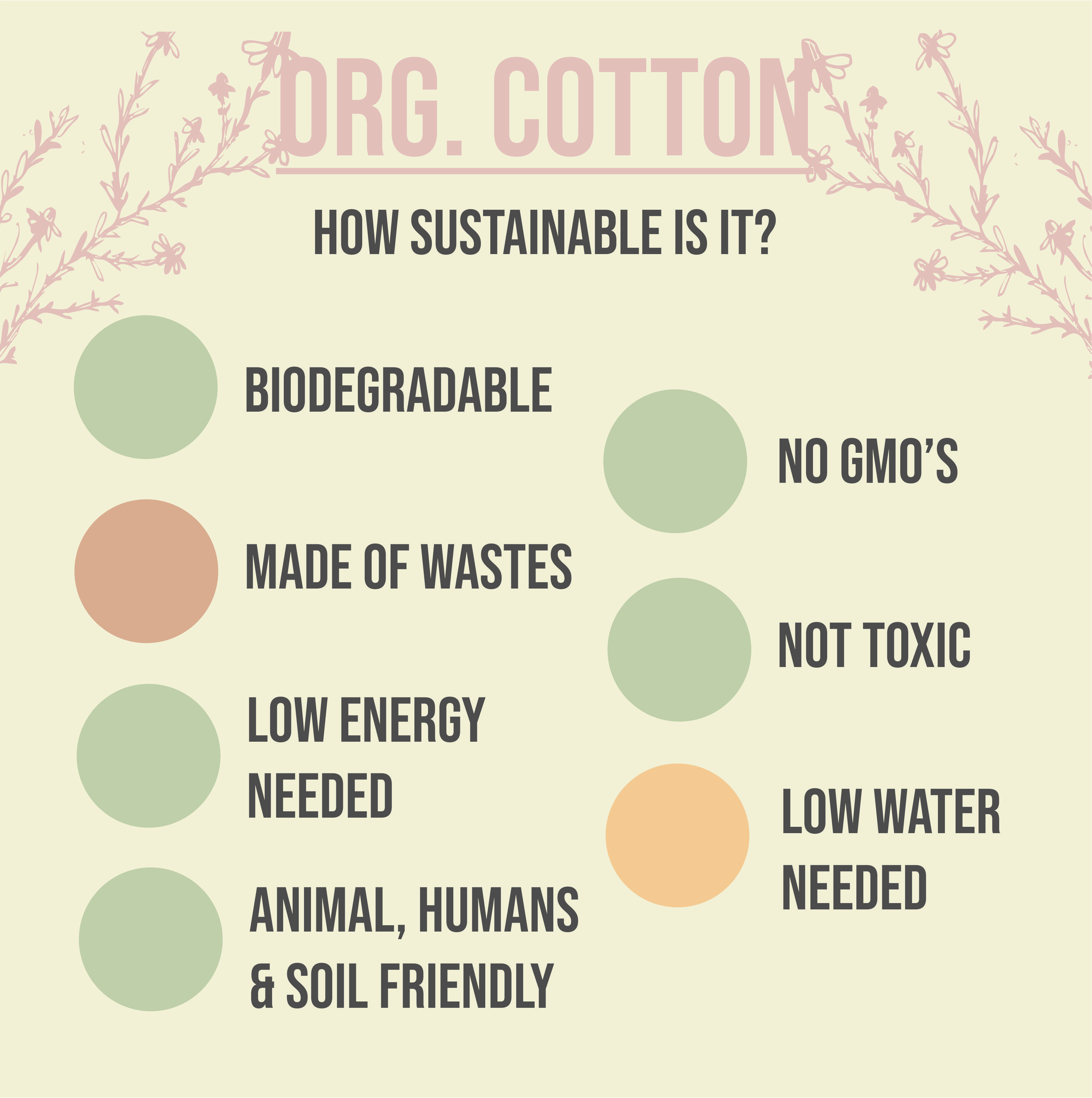
A better substitute for cotton, polyester & acrylic.
Used in: Dresses, shirts, sweaters, pants, t-shirts, sheets, towels.
Another hypoallergenic fiber, perfect for baby clothes. It’s a lot softer than regular cotton and it’s as well incredibly versatile just like regular cotton.
Even if it gives us the same benefits that cotton, organic cotton does not harm the soil, farmers, or your skin. It makes a huge difference to avoid the use of pesticides.
However, to obtain the fiber they still use a lot of water, so it’s up to you if you decide to buy it. It’s a great option, but it isn’t perfect.
Organic-Linen
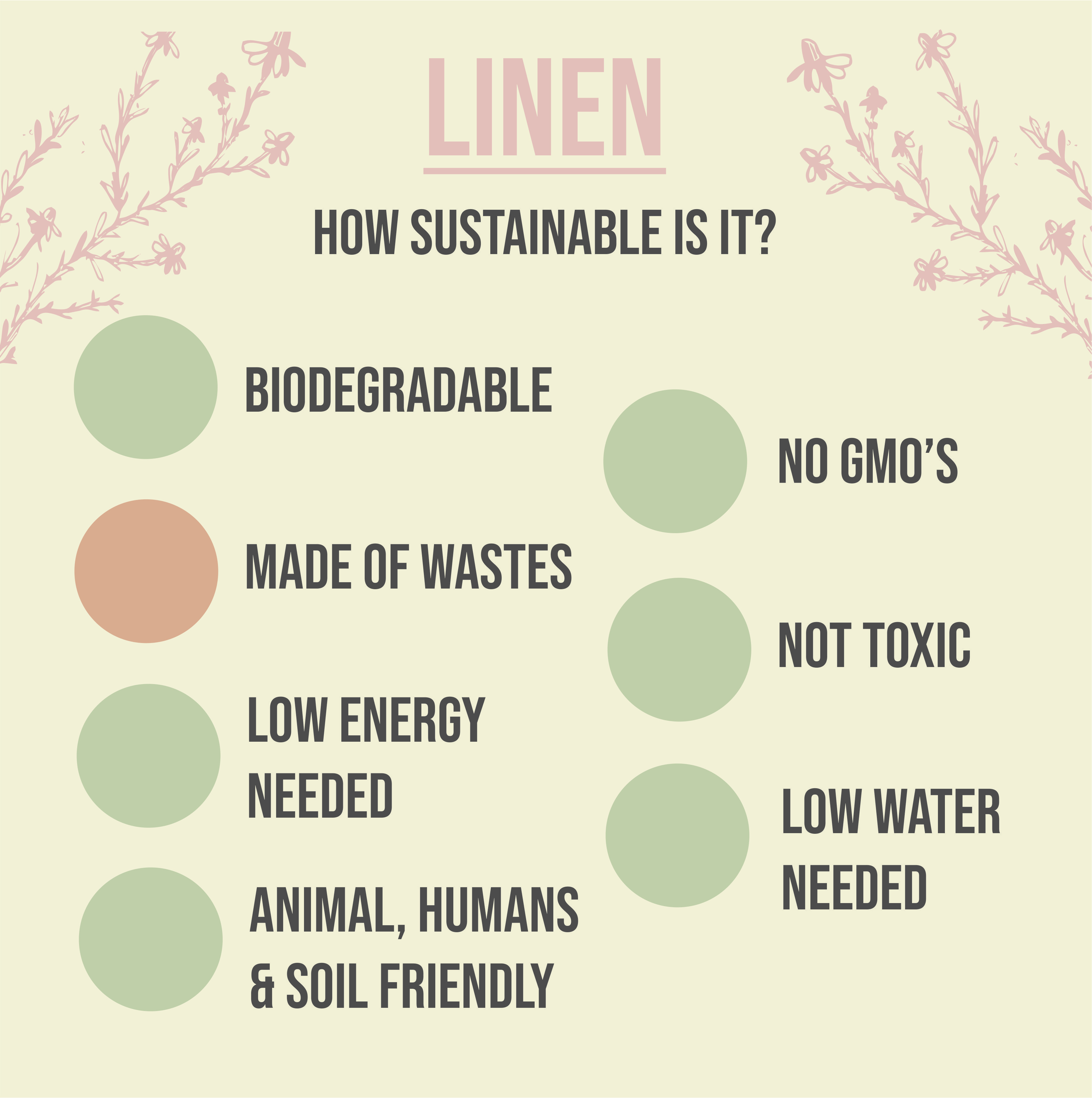
A better substitute for regular linen and cotton.
Used in: Shirts, dresses, blouses, etc.
One of the freshest fibers, amazing for places with warm weather. It’s not a very affordable fiber for everyone, but it’s a lot more sustainable than cotton or even organic cotton.
It comes from the flax plant and uses way less water than cotton. Even the non-organic version of linen can be considered more sustainable than a lot of eco-friendly fibers.
Don’t be afraid to purchase linen products, they last a while and their environmental impact is none if it is organic.
Organic hemp
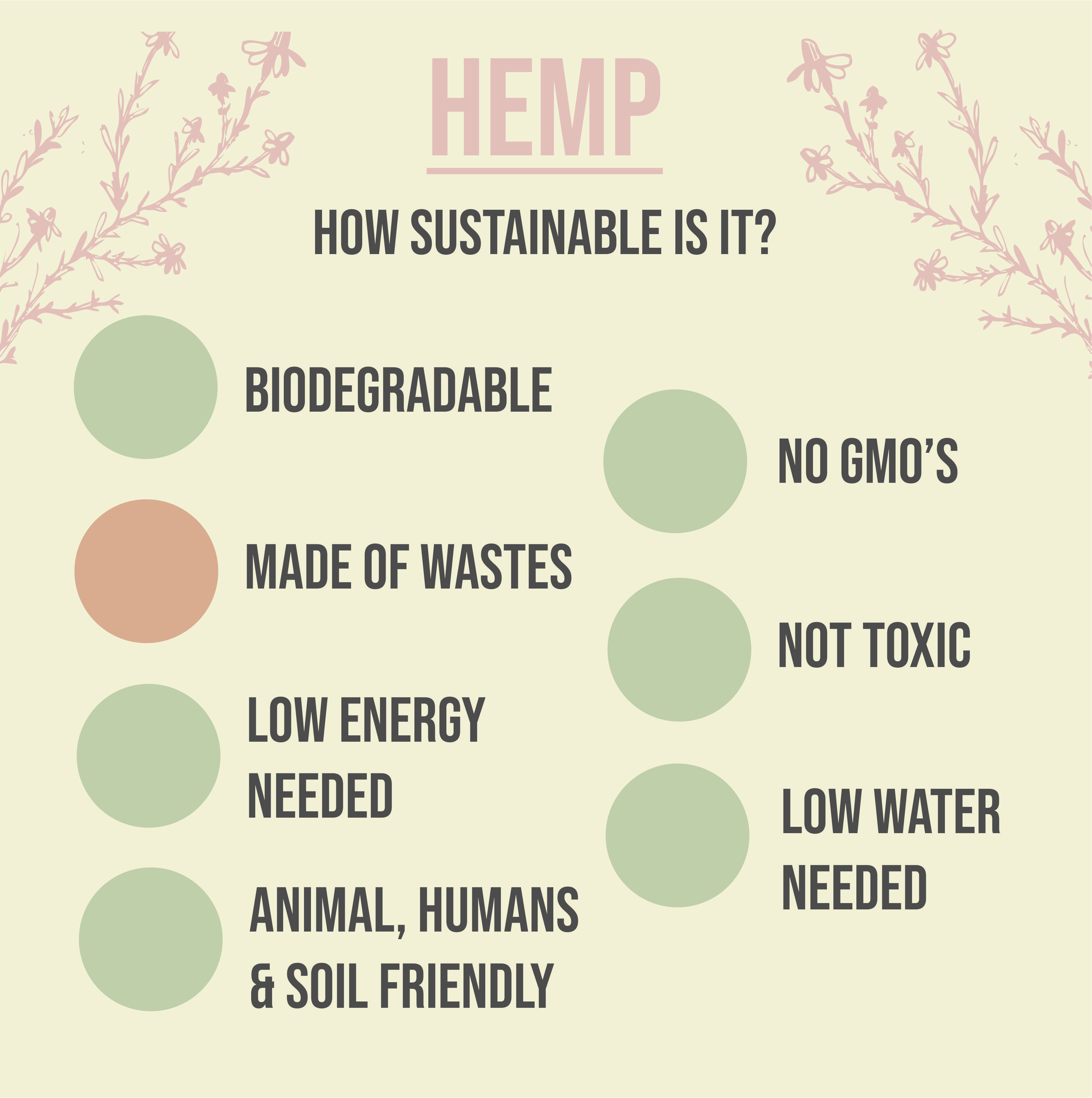
A better substitute for cotton and wool.
Used in: Bags, shirts, sweaters, sweatshirts.
Nonorganic hemp uses almost no chemicals compared to cotton, and a lot less water. Just like linen, the regular version of this fiber can be considered sustainable, but the organic version is even better.
I’ve seen hemp sweaters as a vegan substitute for wool. It’s a thicker fiber, less soft than many others that we’ve mentioned here.
Tencel®
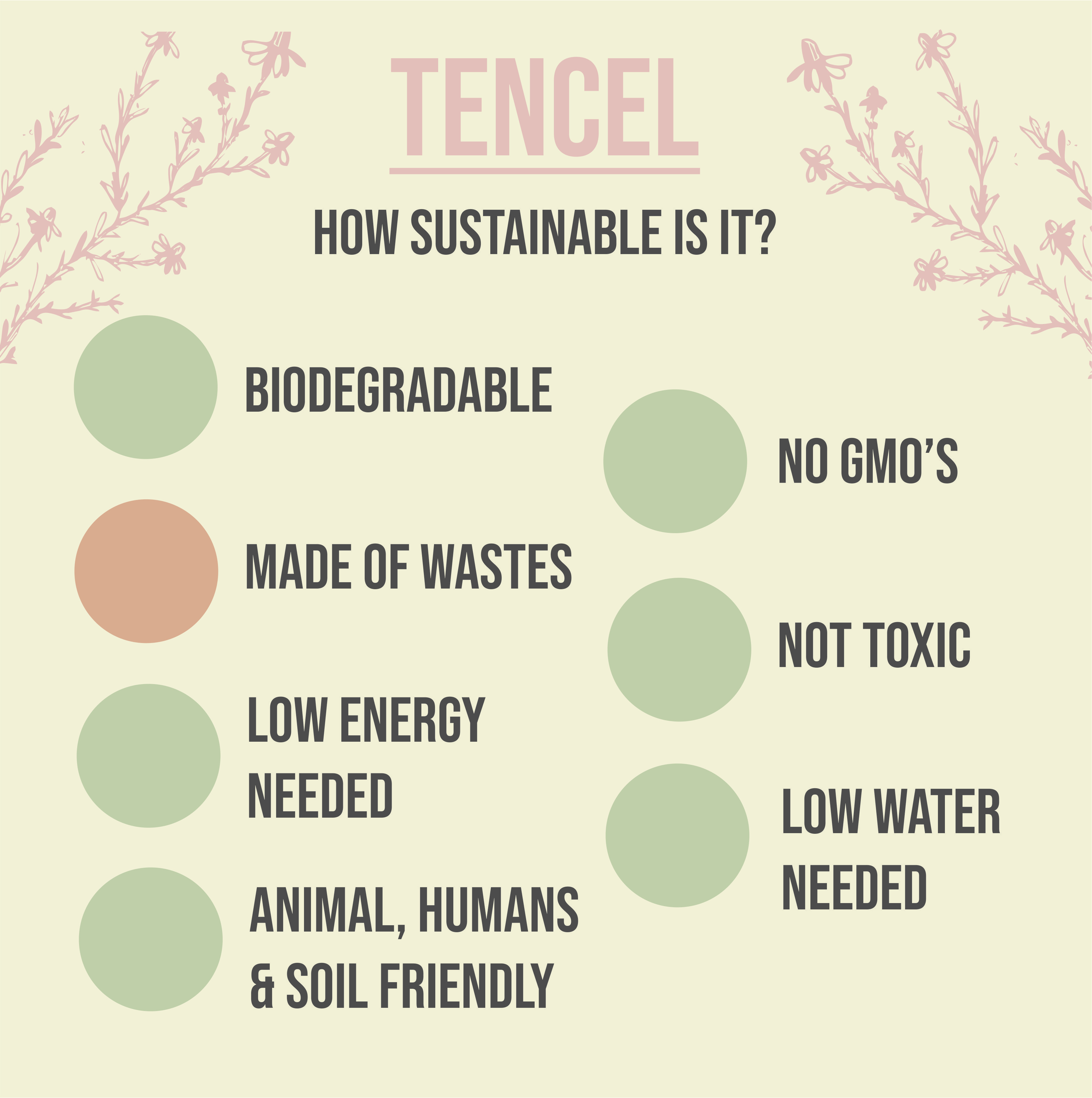
A better substitute for rayon/ viscose, cotton & polyester.
Used in: Jeans, t-shirts, dresses, underwear, pajamas, etc.
Tencel, also known as Lyocell, is basically the sustainable version of rayon. It’s silky, light, and comfy. The fiber is obtained from the pulp of eucalyptus trees. They don’t need pesticides to grow and they grow quickly.
Recycled Cotton
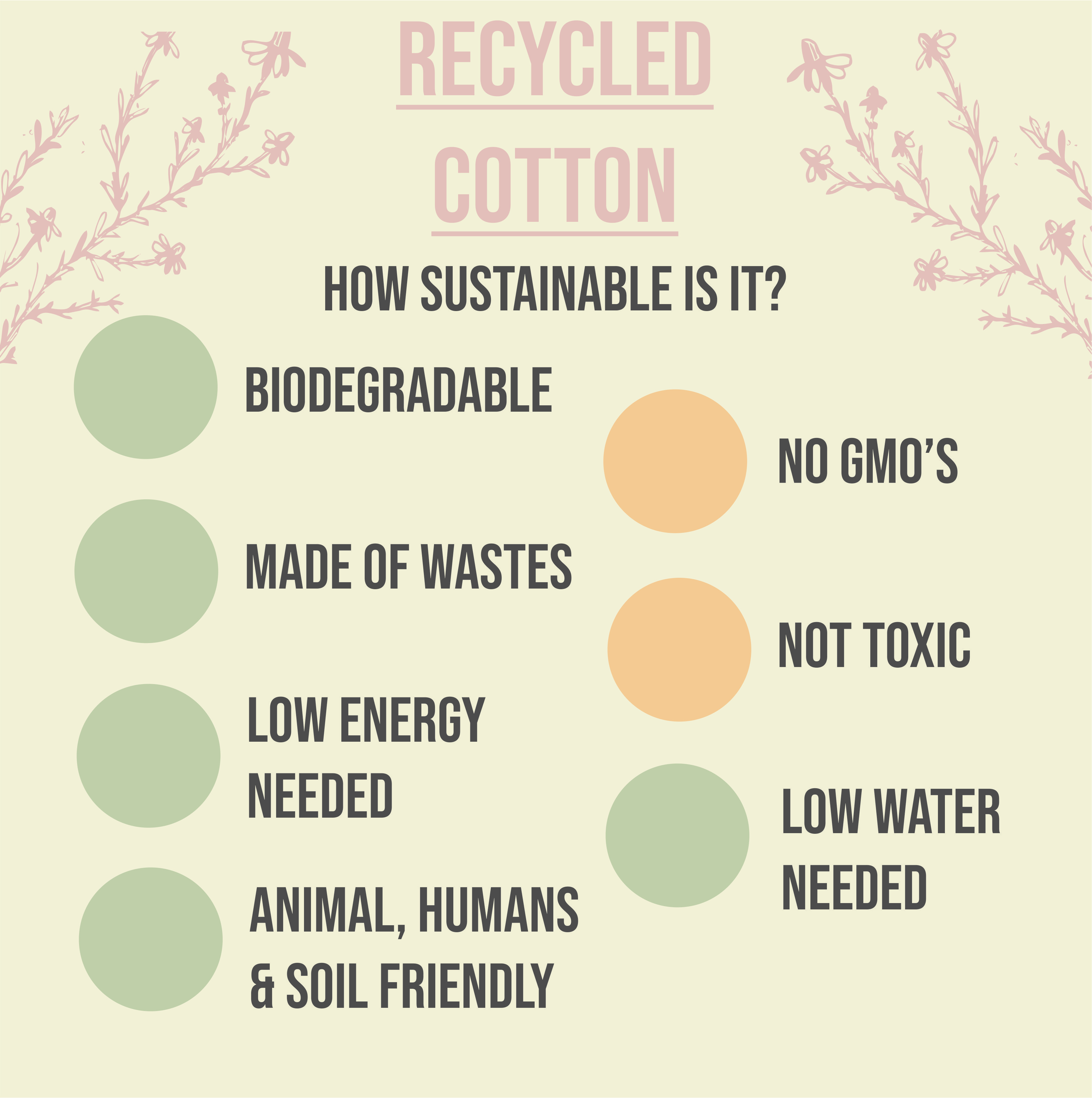
A better substitute for cotton, acrylic & polyester.
Used in: All cotton products.
This is one of my favorites. What makes this fiber sustainable is the fact that we are reusing what already exists, instead of making or producing more.
Even if cotton is biodegradable, being able to reuse the fiber and avoid the generation of more makes a huge impact on the Earth. It isn’t expensive and we can find it in so many brands already!
Piñatex
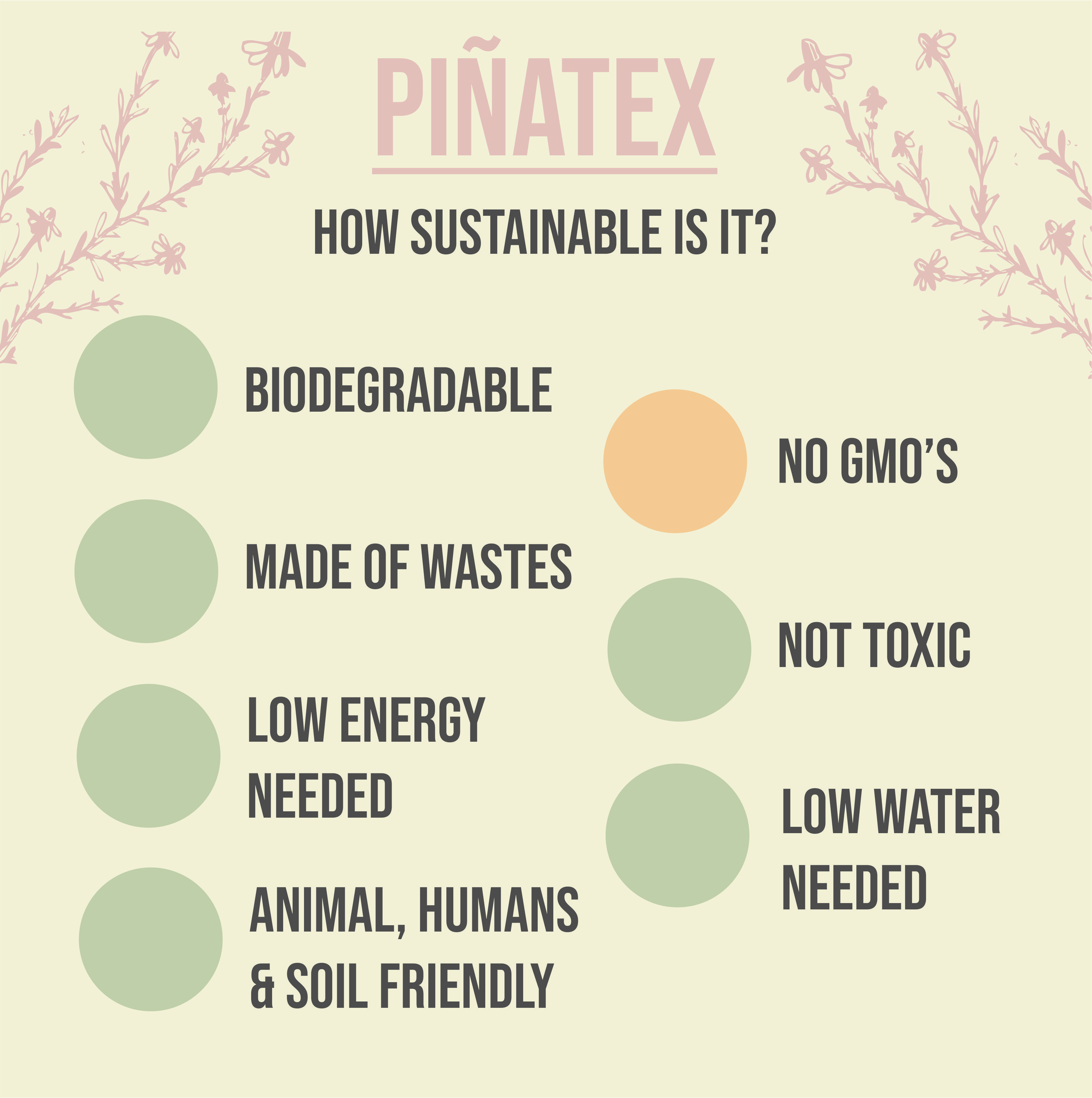
A vegan substitute for leather.
Used in: Shoes, purses, jackets, etc.
If you try to keep your closet as vegan as possible, then you are going to love this!
A fiber made of pineapple leaves that simulates leather! Simply incredible. The best part is that they use the leaves of the pineapple harvests, so it’s basically made from the wastes.
Orange Fiber
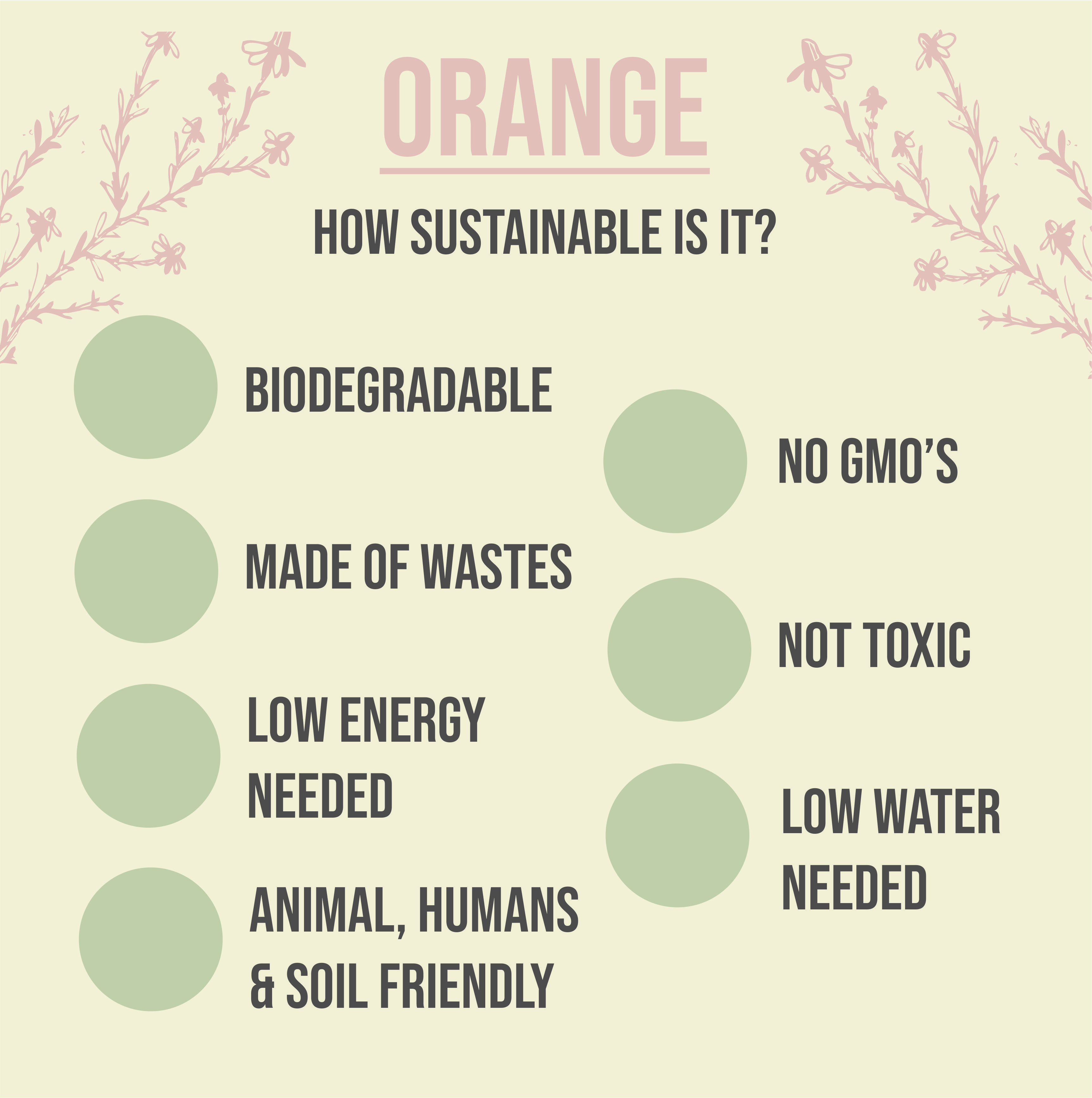
A better & vegan substitute for silk.
Used in: Shirts, scarves, etc.
This is the perfect vegan replacement for silk. It is made of orange skins and they get these from the juice industry, so again, another natural fiber made from wastes.
Refibra
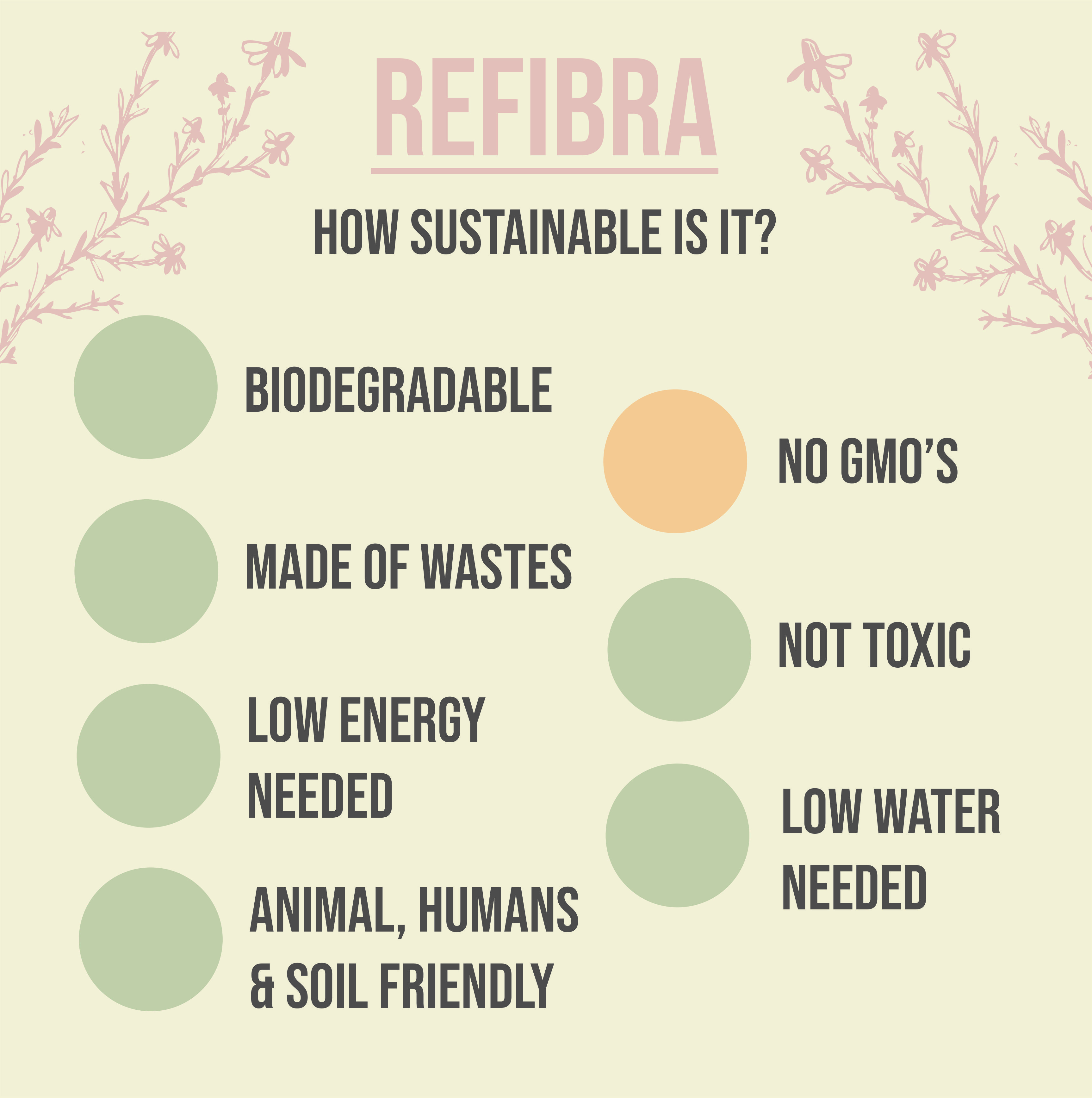
A better substitute for cotton & rayon.
Used in: Dresses, shirts, pants, pajamas, etc.
Refibra is a fiber obtained from cotton and wood waste, enough to make it sustainable. It’s very similar to the Tencel, only that it has cotton on it.
ANIMAL-BASED:
Wool
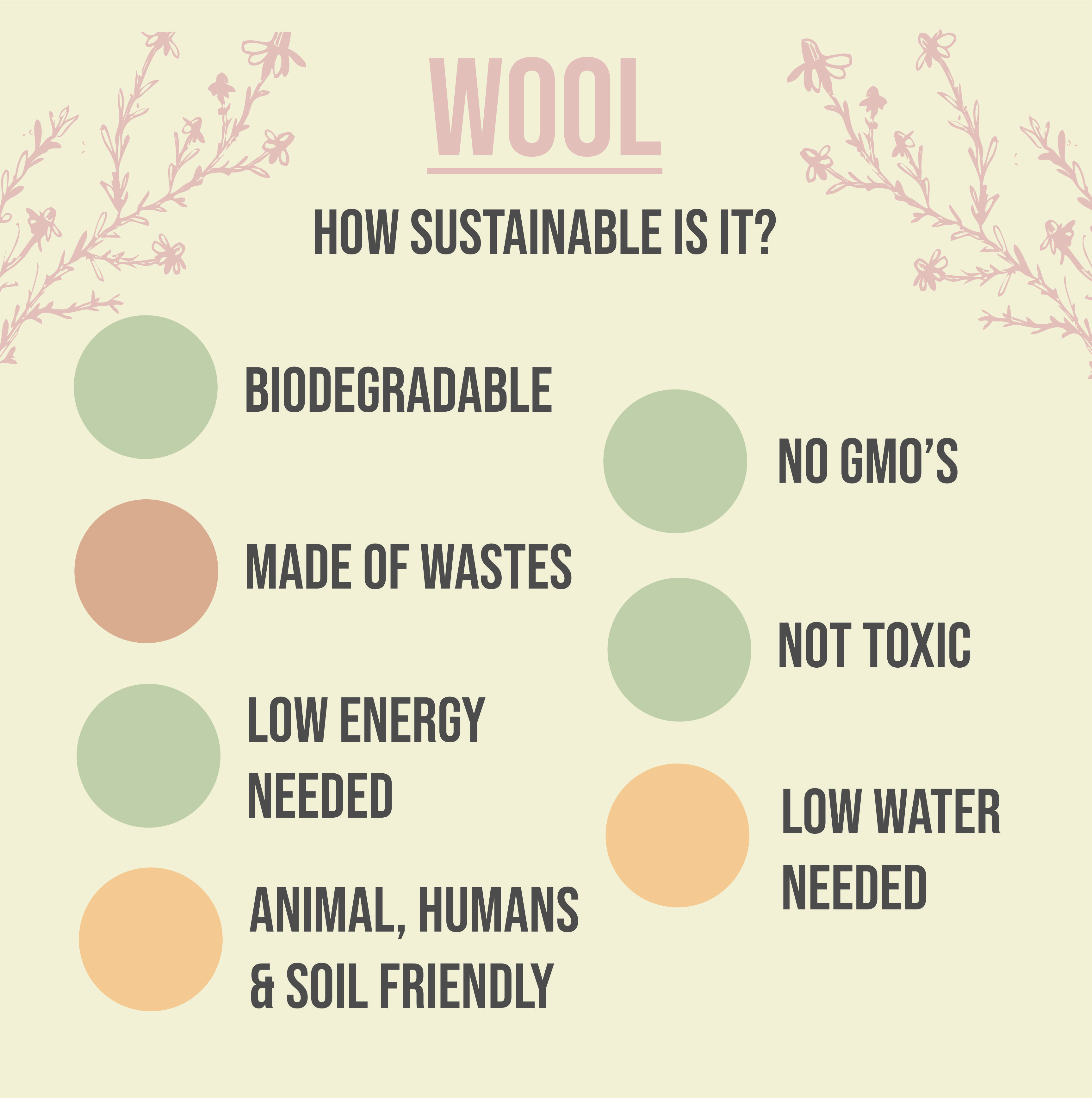
A better option than acrylic.
Used in: sweaters, blankets, pants, winter clothing in general.
When we talk about wool, we’re talking about responsible wool. The one where no sheep is harmed to obtain it. However, I put the animal friendly for all the vegans who don’t support this and because the sheep can be feed with inorganic food. That makes it not so soil friendly either.
Wool offers us durability and warmth, and as well, it is biodegradable. One garment made of this fiber could last decades, saving us money and waste.
Recycled Wool
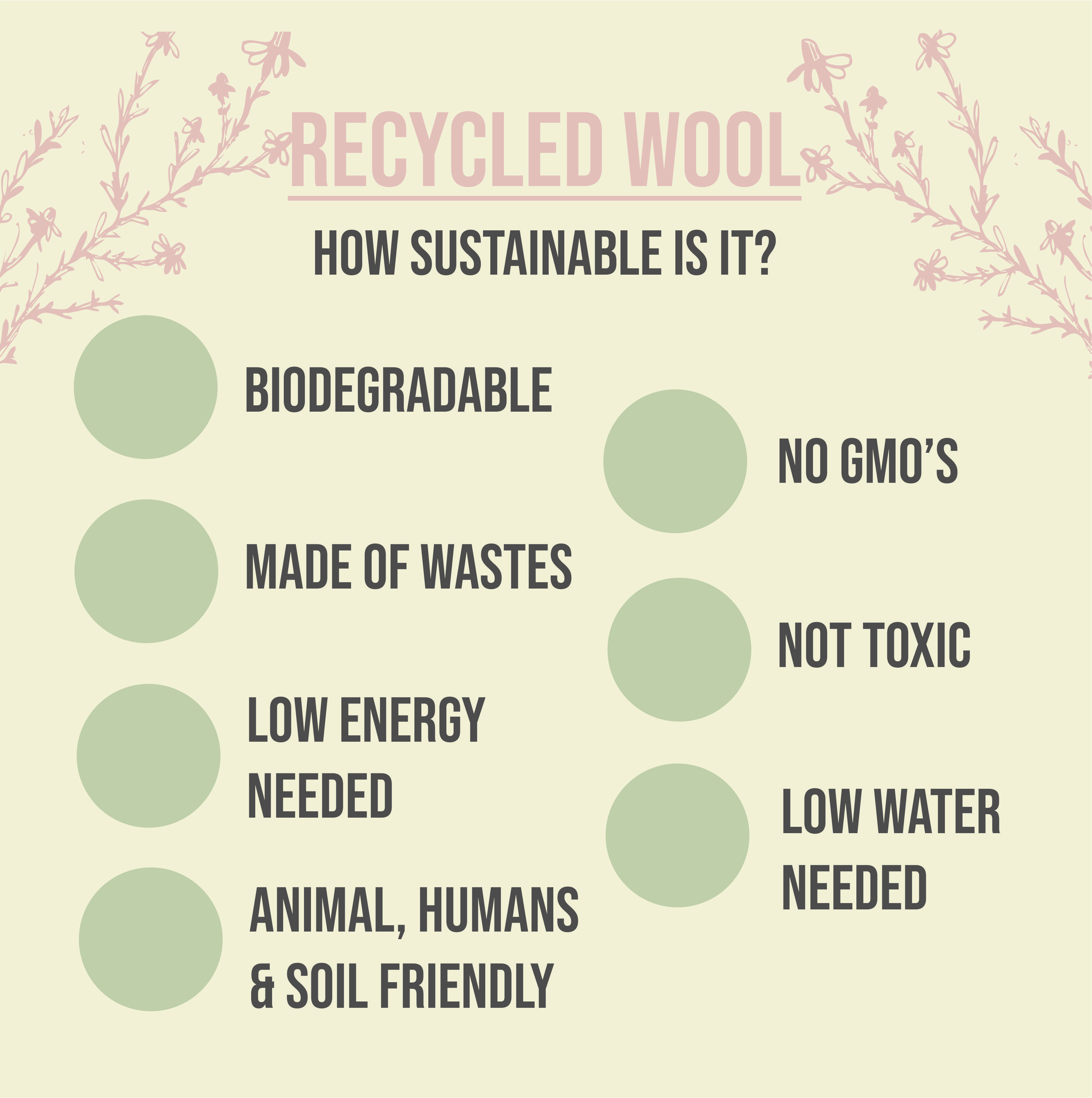
A better option for regular wool and acrylic.
Used in: sweaters, blankets, pants, winter clothing in general.
What’s better than wool? Recycled Wool. If you’re against using animals for their fleece and you’re not vegan, then you will like this one. No need to keep using animals for its extraction, because the wool is already there, and it’s just being reused.
Sustainable Cashmere
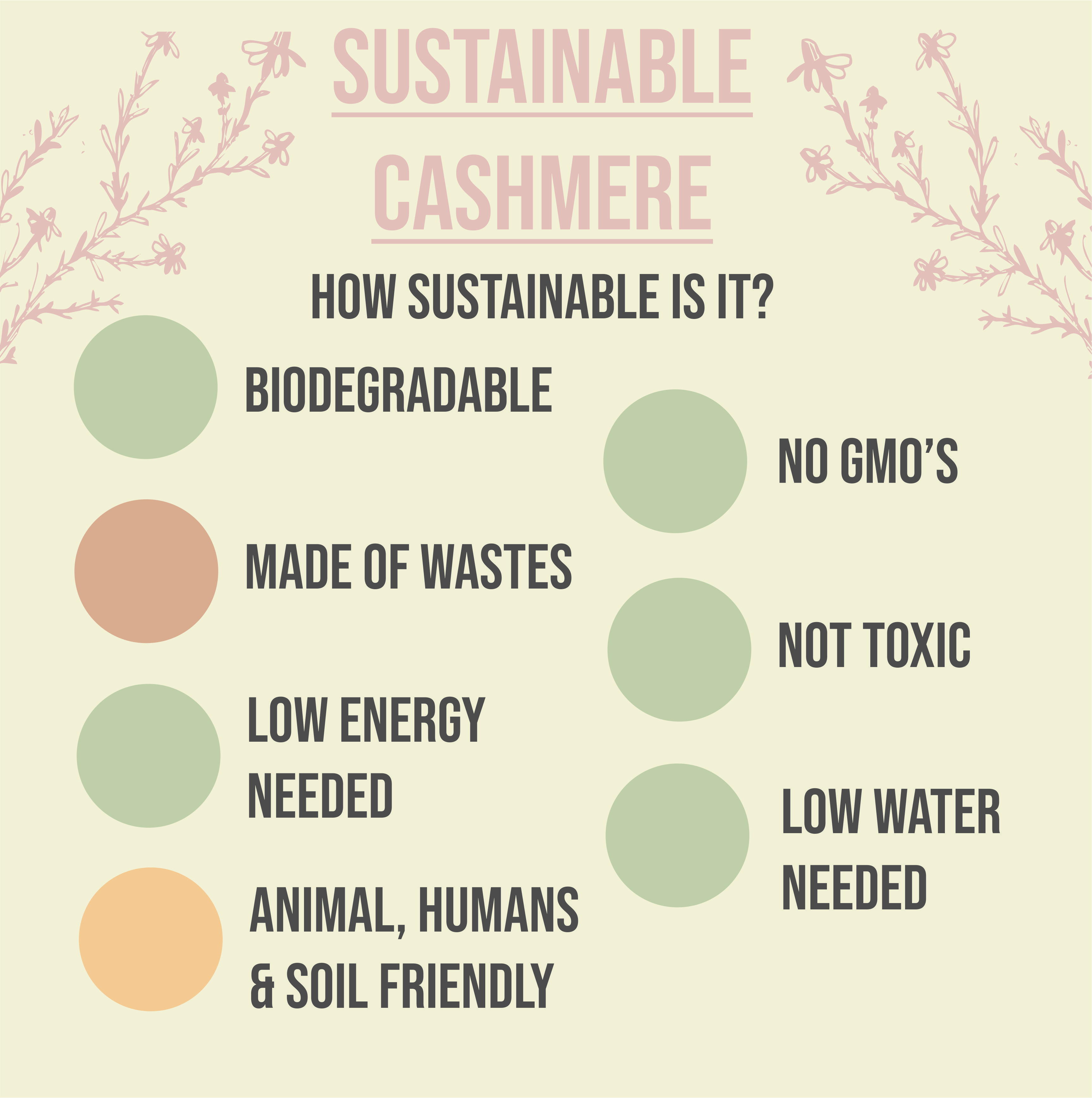
A better option for conventional cashmere.
Used in: sweaters, scarves, gloves, etc.
Cashmere is probably the softest, warmest, and coziest of all fibers. The conventional way of obtention can be very damaging to the environment and sometimes it isn’t cruelty-free.
Luckily to us, there’s a sustainable option, better for the environment and for the cashmere goats.
Alpaca
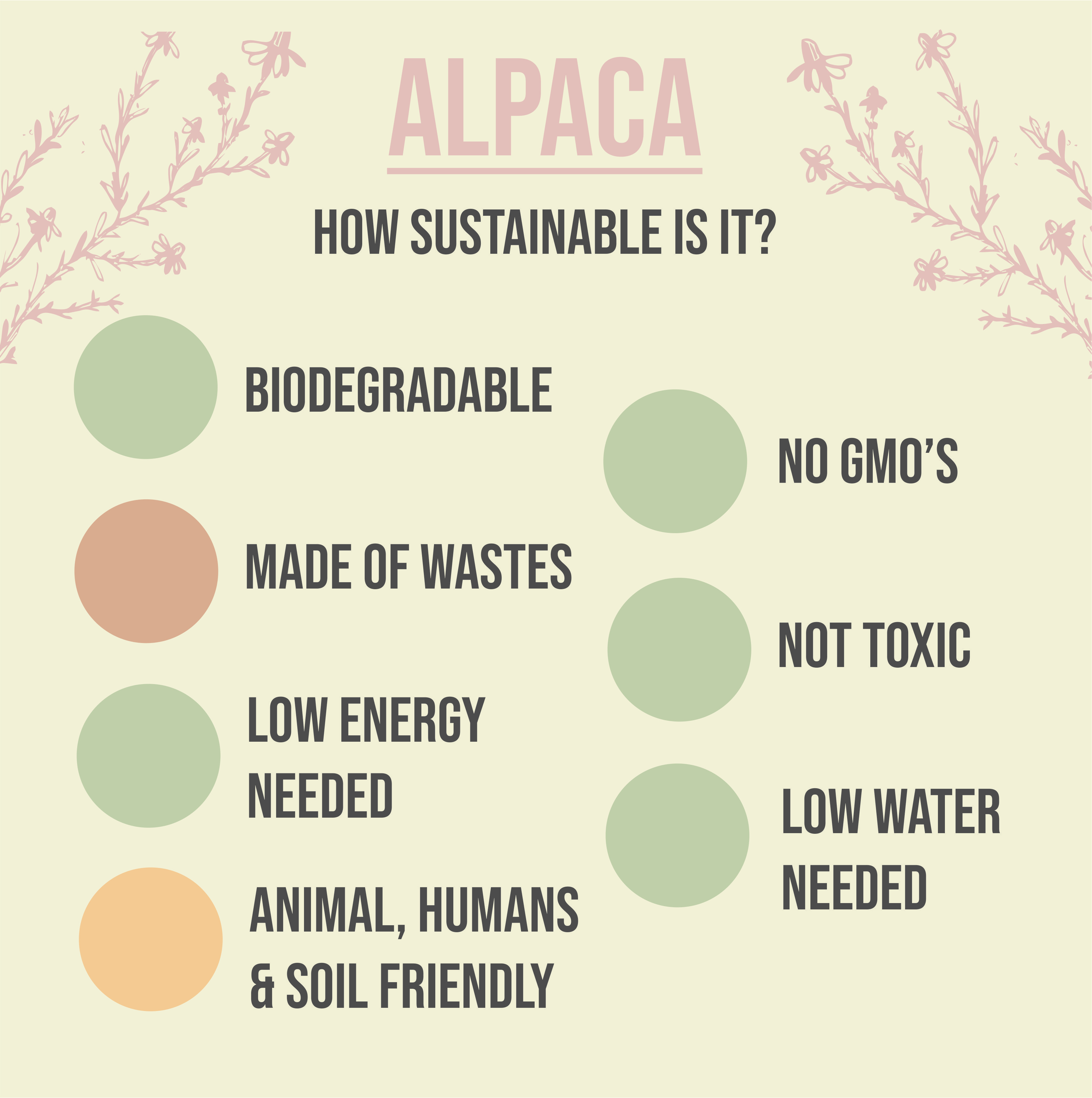
A better option for acrylic and conventional wool.
Used in: Winter wear, mostly.
It comes from the fleece of the animal with the same name, Alpaca. They eat a lot less than sheep and cashmere goats, which means their cattle are easier to maintain. They also cut the grass to eat it, instead of pulling it out (cashmere goats’ case).
From the three types of fleece we’ve mentioned, this is by far the most sustainable.
Recycled Leather
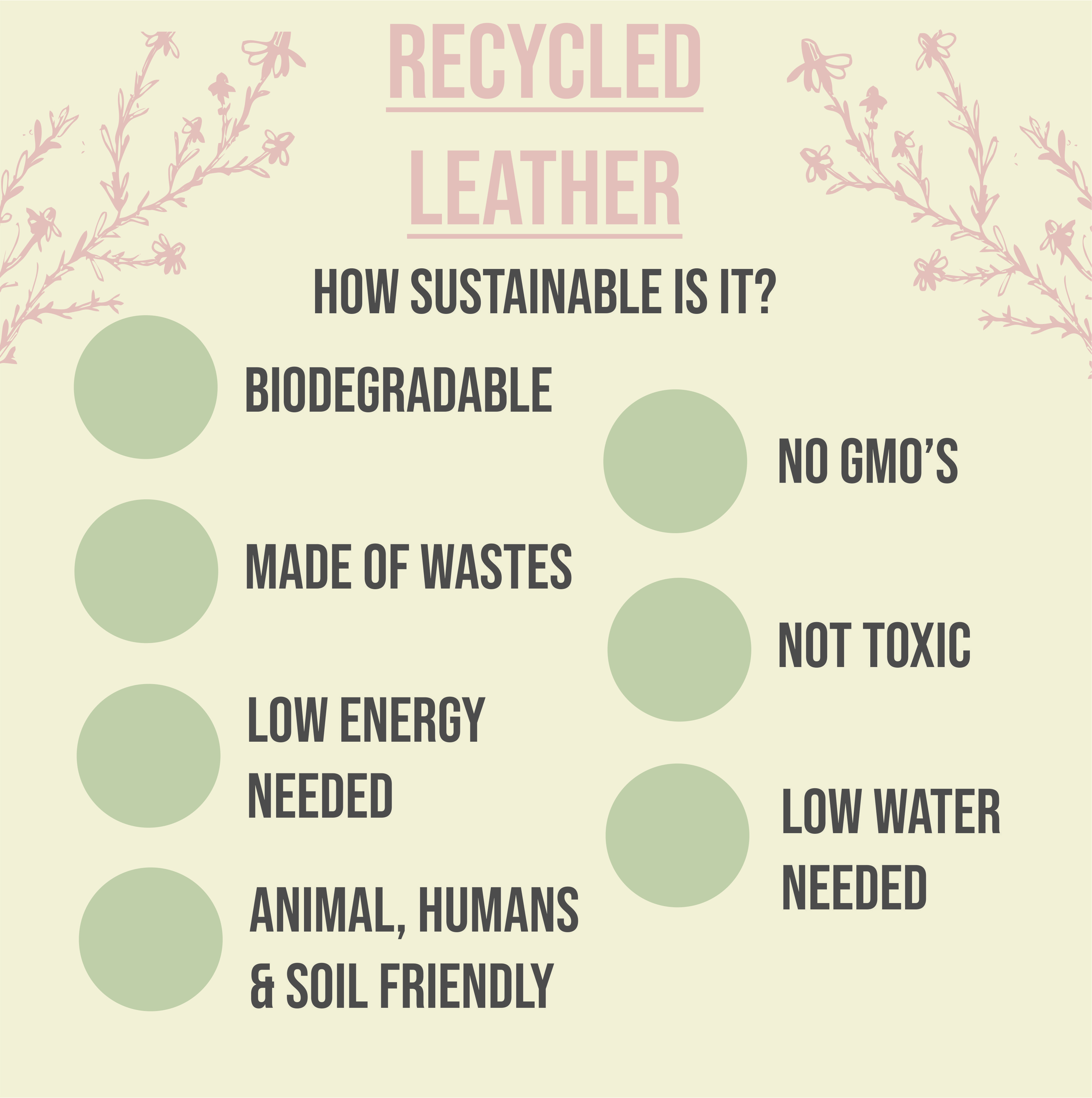
A better option for leather.
Used in: Jackets, shoes, purses, belts, etc.
Conventional leather is not good for anyone. It might last a while, but their tanning process is so harmful to the environment.
However, recycled leather offers us a better and most sustainable option. Using what already exists and avoiding the consumption of meat and animals is what makes it more sustainable.
We know leather pieces last forever, so using them again to generate new products is a lot better.
Qmonos
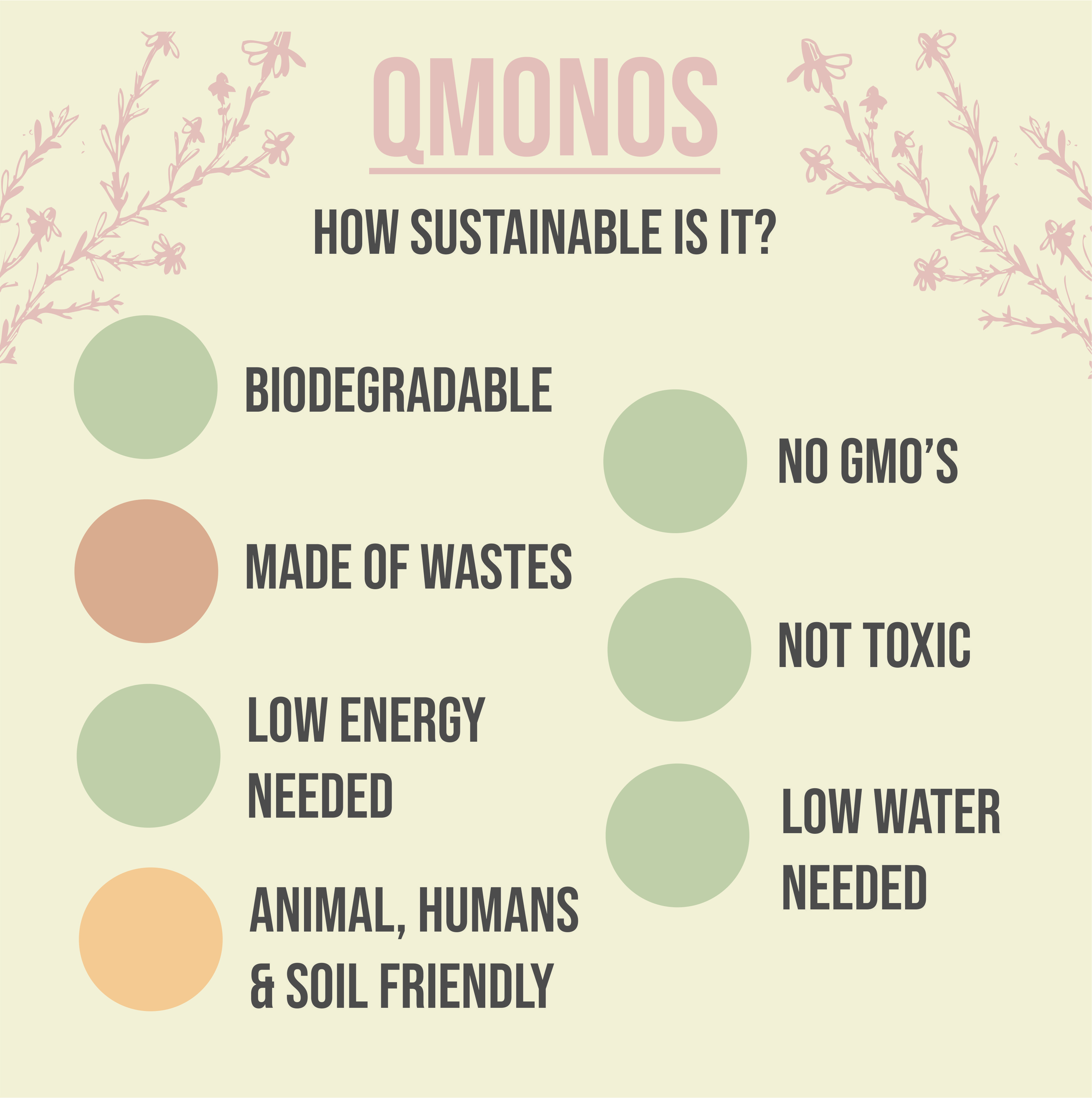
A better option for silk.
It isn’t that common yet, but Qmonos is spider silk, with the big difference that no one dies here. Spiders produce the fiber and are able to live, compared to the silk process.
The synthetic fibers
Recycled nylon
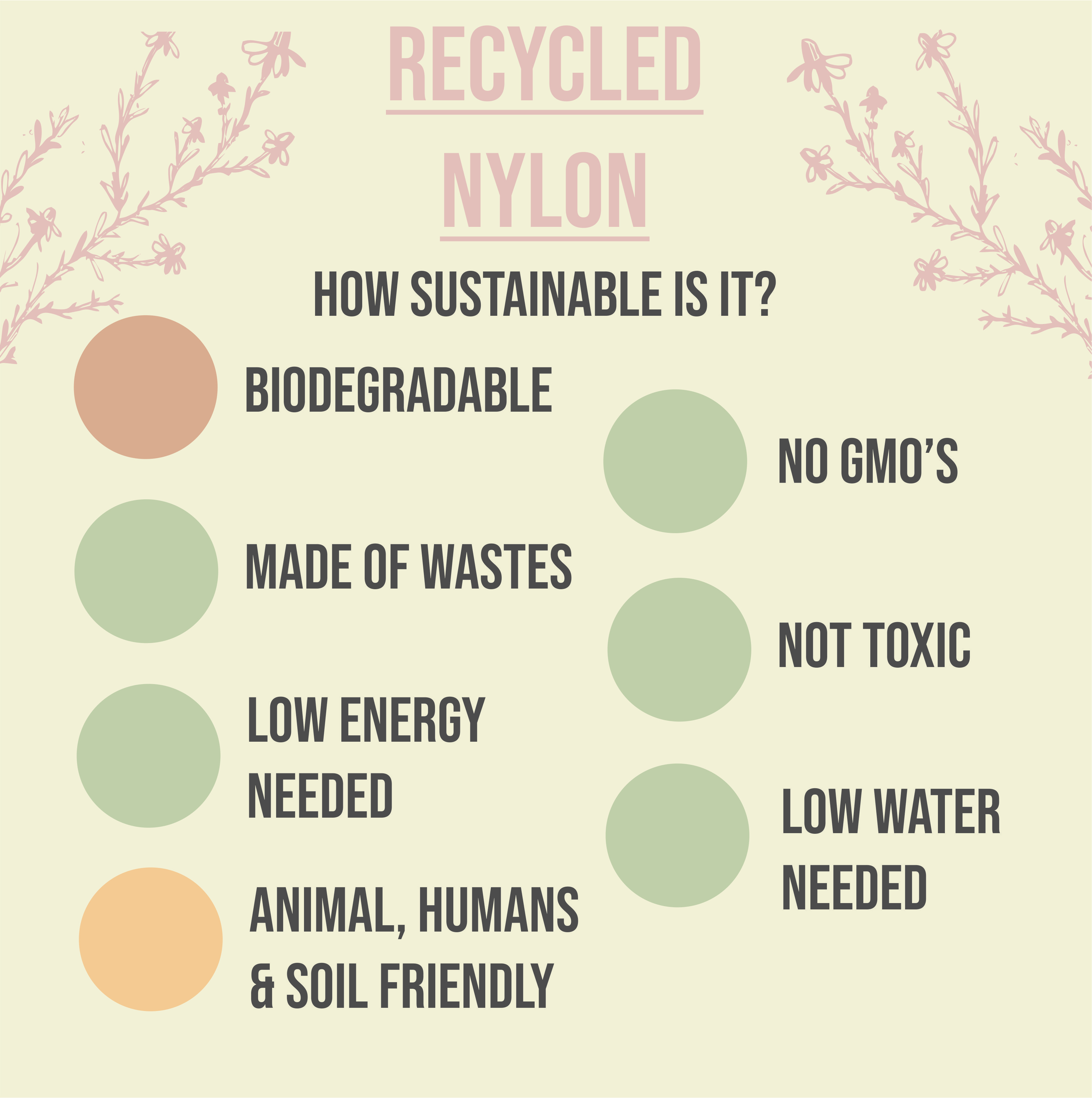
A better option for conventional nylon.
Used in: Jackets, sports, and activewear.
Any plastic fiber should be avoided, but we also can’t deny there’s a lot of plastic waste in the world. Recycling nylon from landfills is not only great to clean our planet, but it also uses less water and energy than the generation of new nylon would.
If you’re going to buy plastic fibers, make sure there is a “recycled” written on their label.
Recycled polyester
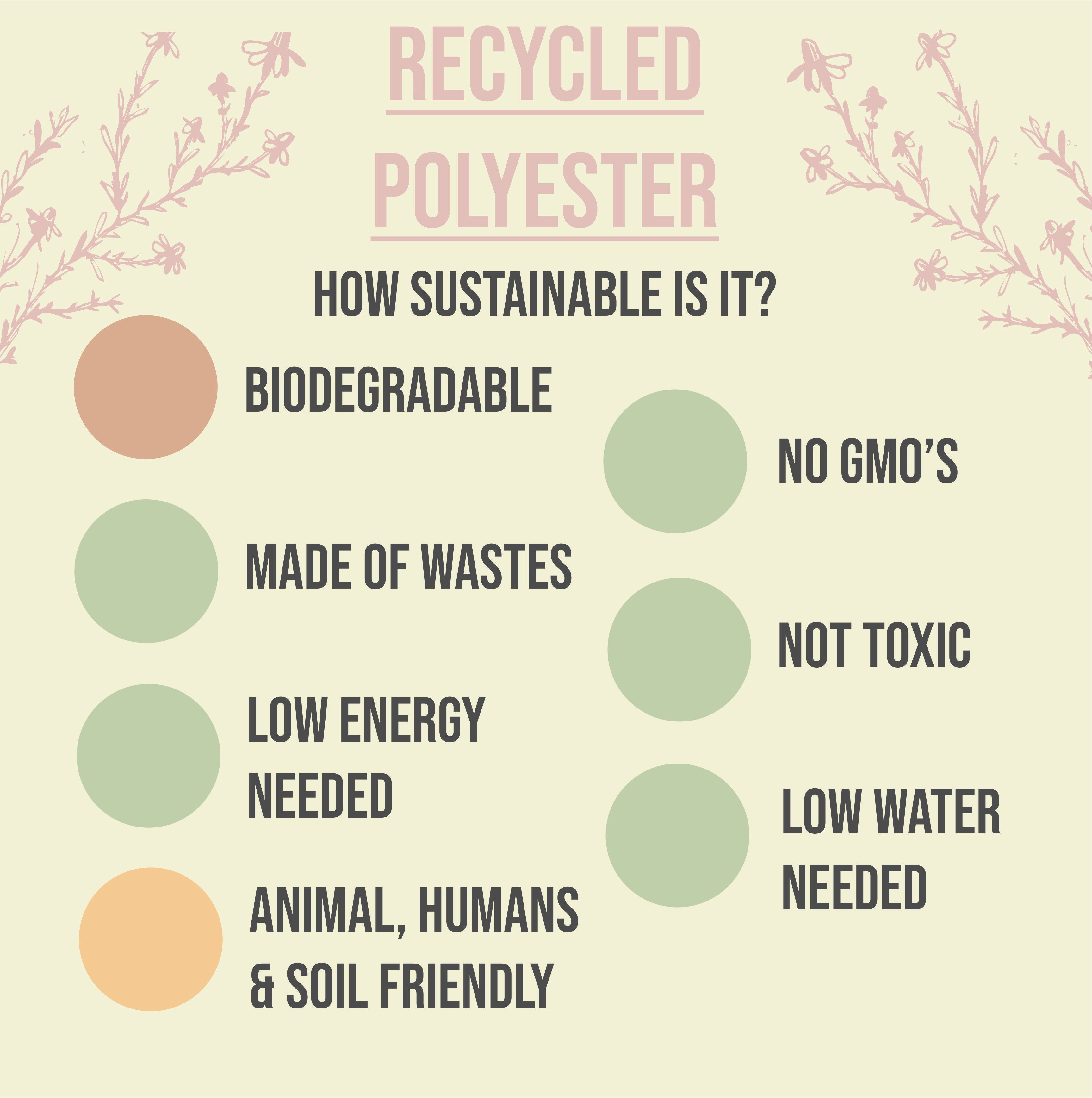
A better option for regular polyester.
Used in: Pants, sweatshirts, shirts, sports, and activewear.
Just like recycled nylon, recycled polyester can help us clean our landfills. It generates less CO2 emissions and uses less energy and water.
It comes from plastic bottles and even if it’s not biodegradable, at least we are not helping the production of more plastic increase. However, recycled polyester can only be recycled once, so keep that in mind.
As you can see, there are a lot of other options now. We don’t have to stick to what we know. It’s okay to explore and try out new things.
What’s great is that some of the sustainable fibers help the environment instead of having a low impact and that’s huge progress! I’ve been trying to stick to these fibers and I have found them at stores, so I know that if you look at your labels, you’ll surely find something for you!
Have you tried any of these? And if you have, what’s your favorite? Let us know in the comments!
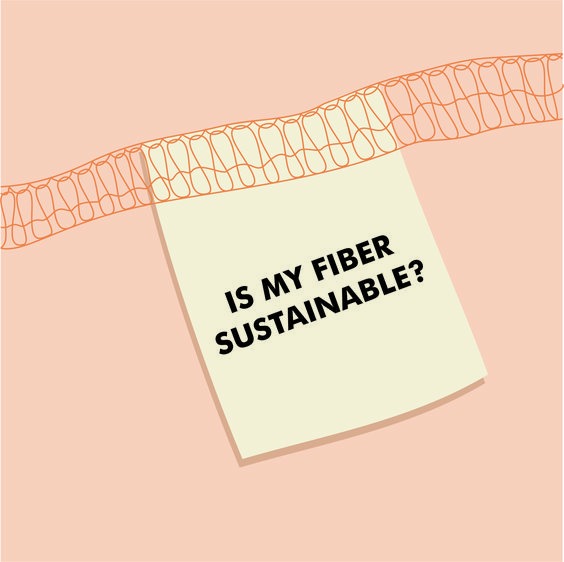


[…] If you’d like to know more about these silk alternatives check this post The Ultimate Sustainable Fiber Guide —For Fabrics— […]